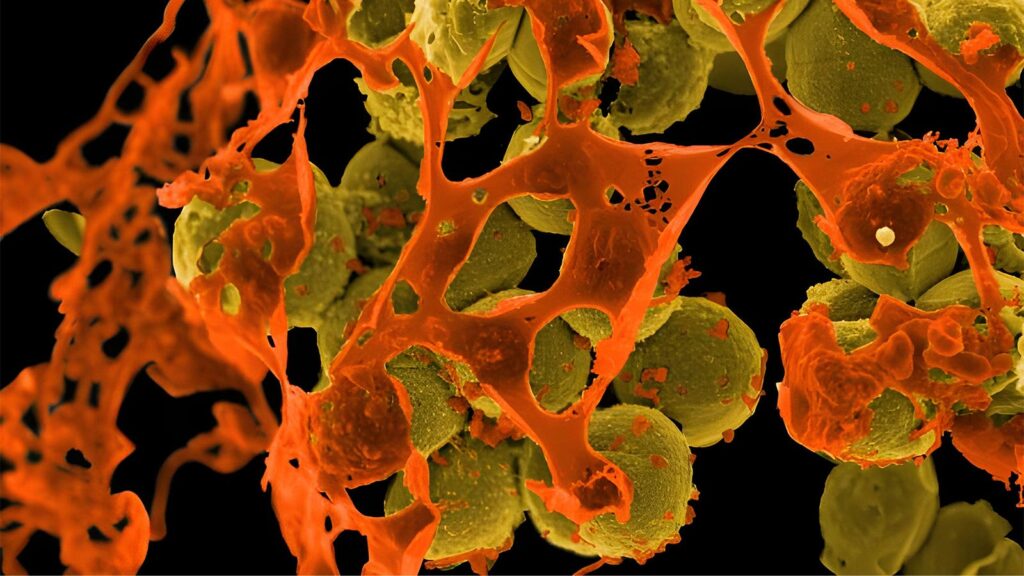Female patients with Staphylococcus aureus bacteremia (SAB) had higher mortality risk than male patients, according to a systematic review and meta-analysis.
In adjusted mortality data from 32 studies accounting for additional patient characteristics and treatment variables, female patients with SAB had a higher mortality risk relative to male patients (pooled adjusted OR 1.18, 95% CI 1.11-1.20), reported Annette Westgeest, MD, of Leiden University Medical Center in the Netherlands, and colleagues in JAMA Network Open.
Unadjusted mortality data from 81 studies also showed increased mortality risk in female patients compared with male patients (pooled OR 1.12, 95% CI 1.06-1.18).
“The typical factors that we think of as influencing mortality [in SAB] include things like advanced age, presence of diseases such as cancer or diabetes, or antibiotic resistance,” co-author Joshua Thaden, MD, PhD, of Duke University School of Medicine in Durham, North Carolina, told MedPage Today. “We don’t typically think of patient sex as being an important factor in influencing patient death. This isn’t an area that’s received much attention.”
S. aureus is the leading cause of death due to bacterial bloodstream infections, the authors noted, but evidence that links increased mortality risk with SAB to female sex has been mixed.
“This issue is of critical importance, since sex differences in clinical outcomes have been identified in other fields — such as cardiovascular disease — and eventually prompted changes in management practices,” Thaden said.
“This study may just be the tip of the iceberg,” he added. “There are likely other infectious syndromes whose clinical outcomes are similarly influenced by sex, though we need to do more work to identify them.”
Westgeest and colleagues pointed out that “sex-related differences in outcome may be due to a variety of social or biological factors,” but they acknowledged that there is little conclusive information about potential biological causes. In fact, previous studies on sepsis have generally supported better outcomes in female patients, they explained, perhaps due to positive immunomodulatory properties of sex hormones on the immune system and cardiovascular function in females.
Social and treatment factors, such as women waiting longer before seeking treatment and gender bias in healthcare delivery, could have accounted for the differences in mortality odds, the study authors posited.
Previous studies have demonstrated that women with septic shock and critical illness are more likely to experience delays in antibiotic treatment, be offered less invasive treatment, and are less likely to receive quality acute care, when compared with men, they noted. They also cited a recent study from their own research group that showed women with SAB received shorter durations of antimicrobial treatment than men and were less likely to undergo transesophageal echocardiography.
The authors pointed out that there were differences among the mortality outcomes based on geographic location. For example, for studies conducted in East Asia, there was no significant difference in mortality between females and males with SAB. However, for studies conducted in North America, the odds of females dying from SAB were 57% higher than for males (aOR 1.57, 95% CI 1.23-2.01). “This may reflect the large practice variations for SAB throughout the world,” they wrote.
For this systematic review and meta-analysis, Westgeest and colleagues included 89 studies with 132,582 patients (62.1% male). Of these studies, 40% were conducted in Europe, 28% in Asia, and 22% in North America. Most were published after 2010.
There were several limitations to their analysis, the authors noted. For example, sex differences weren’t the primary outcome in most of the studies and there may have been reporting bias in studies that didn’t include adjusted data for mortality by sex. Also, heterogeneity in the disease itself, which can range from uncomplicated bacteremia to complicated disease, could have influenced their findings, they wrote.
Disclosures
The study was funded by grants from the NIH.
Westgeest and Thaden reported no relevant financial disclosures. Other co-authors reported ties to industry.
Primary Source
JAMA Network Open
Source Reference: Westgeest AC, et al “Female sex and mortality in patients with Staphylococcus aureus bacteremia: a systematic review and meta-analysis” JAMA Netw Open 2024; DOI: 10.1001/jamanetworkopen.2024.0473.
Please enable JavaScript to view the comments powered by Disqus.
Source link : https://www.medpagetoday.com/infectiousdisease/generalinfectiousdisease/108915
Author :
Publish date : 2024-02-27 13:10:45
Copyright for syndicated content belongs to the linked Source.
